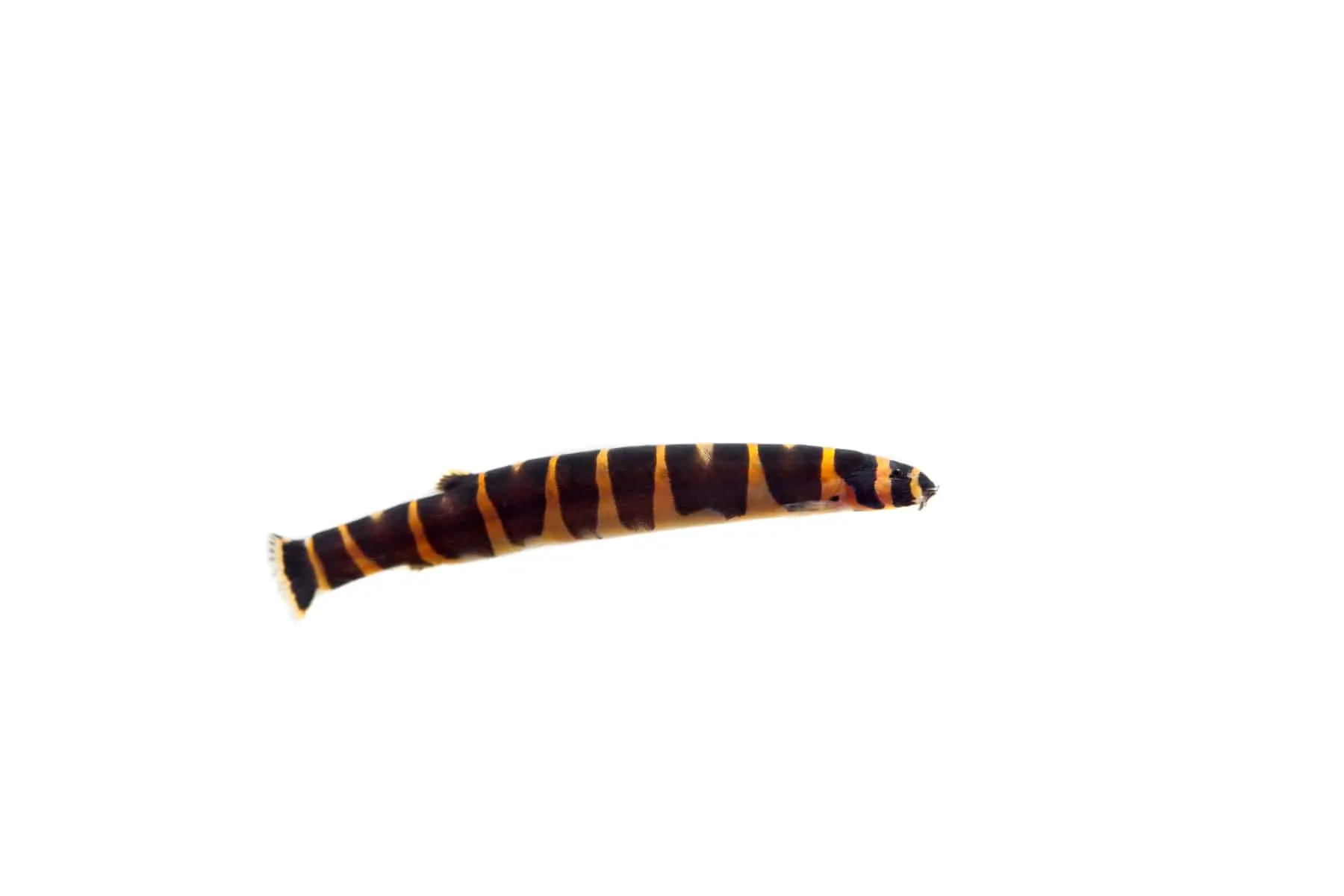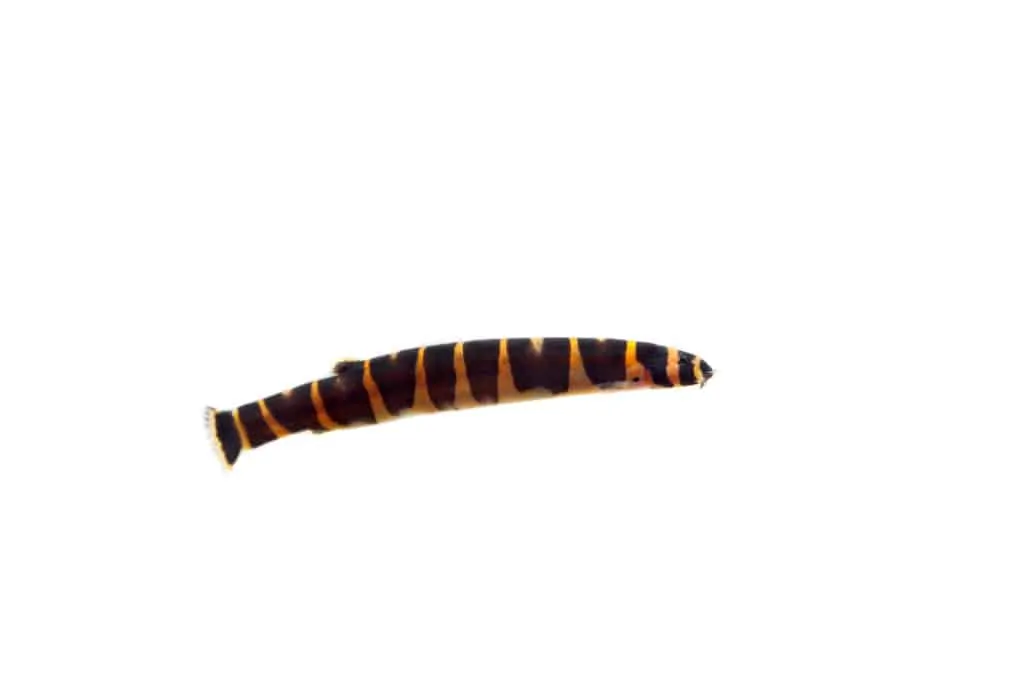The Panda loach is a rare and beautiful small fish that makes an expensive but unique addition to the hobbyist’s aquarium.
In this guide, we introduce you to this stunning little gem from China that would grace any tank setup; if only you could find one!

What is a Panda loach?
The Panda loach, scientific name Protomyzon pachychilus or Yaoshania Pachychilus, is a small but eye-catching fish that has a creamy-white body, decorated with bold black patches and blotches. Juvenile fish have the boldest pattern. As the fish mature, the pattern changes to a more mottled, brownish cream coloration, often with a dark band along the lateral line.
A mature panda loach measures up to 2.6 inches in length.
Protomyzon pachychilus is currently listed as of “least concern” on the IUCN endangered species red list. However, the China Red Book of Endangered Animals lists the panda loach as “rare,” and “vulnerable” on the China species red list. The main threats to the species come from deterioration of water quality, largely because of pollution, construction of hydropower dams, desiccation of waterways, and electro-fishing.
Natural habitat
The Panda loach hails from Guangxi Province in China, where it lives in clear mountain brooks that flow from the Dayaoshan mountains 2,900 feet above sea level into the Xi Jiang River. Here, the water is cool, well-oxygenated, and very fast-flowing.
The substrate in this habitat comprises mostly sand and smooth gravel, dotted with boulders and water-worn rocks. There’s hardly any vegetation here, although some species of riparian water plants do grow along the brook margins, and the rocks are coated with a layer of rich biofilm.
Care of the Panda loach Protomyzon pachychilus
The Panda loach Protomyzon is not a straightforward fish to care for. Here’s what you need to know if you decide to invest in one of these rare beauties.
Tank conditions
As you would expect, providing ideal tank conditions that replicate the panda loach’s wild habitat is tricky.
Rather than a new tank setup, you will need a mature, river-style aquarium that has highly-oxygenated, cool water with a powerful filtration system that provides a strong current. To simulate the shallow stream environment that the panda enjoys in the wild, you must use bright lighting and tight-fitting cover-slides to encourage algae growth.
Things become challenging when you try to replicate the subtropical water temperature that the Panda loach Protomyzon pachychilus experiences in nature, especially during the hot summer months.
A sandy substrate should be provided, together with lots of hiding places created from rocks, fragments of slate, and pebbles. The use of bogwood in the aquarium is not recommended, as that can change the water chemistry, making it too acidic and soft for these hard-water-loving fish.
Although plants are not necessary to recreate the loach’s natural habitat, a few broad-leaved river specimens will provide resting places for the fish and do add to the overall look of your aquarium.
Loaches may be content in a relatively small aquarium, as long as you allow one inch of water per fish.
Water quality
Yaoshania pachychilus needs a hard, freshwater setup to thrive. Alkaline conditions are preferable with a pH of 7.2 to 8.2 and a general water hardness level of up to 250DH.
Water temperature should be in the sub-tropical range at around 640 to 720 Fahrenheit.
The Pachychilus panda does not tolerate water with a high nitrate level, so you must be sure to make regular water changes, and your filtration system flow must be efficient.
Tankmates
Panda loaches are highly sociable, peaceful fish and do well when kept in schools of a minimum of five. The Pachychilius panda loach is difficult to sex, so the larger the group, the more chance there is of having a mixture of both sexes, which might give you a good chance of spawning taking place.
You can keep Pachychilius panda loaches with species of a similar size that enjoy the same tank conditions, such as members of the danio family, white cloud minnows, and other mountain stream loach species.
Diet
The wild Pachychilus panda loach will search among the gravel for tiny benthic invertebrate creatures that live in the substrate. In the aquarium environment, pachychilus will eat most food types that are offered, provided that the food is of a suitably small size.
Popular items include the kinds of foods that the fish would find in nature, such as daphnia, mini bloodworms, baby brine shrimp, as well as crushed sinking catfish and algae pellets. If you have very small specimens, they may cope much better with powdered fry foods.
Breeding panda loaches
These river fish are not easy to breed when kept in a captive environment.
However, you may be successful if you provide your specimens with the best conditions, suitable water quality, and a natural diet. It’s essential that you use gravel in your substrate as the tiny, new fry will hide here, as well as in the external filter.

Availability
The panda is not readily available in most local fish shops, and you pay a high price for a specimen. For example, following a search online, we found a fish store website with a description of “panda loach for sale UK.” One specimen would set you back £100 (around $75)!
You may find specimens for sale closer to home, but these fish are one of the hardest to come by in the world and are expensive. Of course, if you have your fish imported, as with most products, you will pay a high cost to ship the specimen, especially if it is coming all the way from China. The same applies if you order from a website where postage costs will add considerably to the total of your shopping cart.
Q&A
In this section of our guide, we answer some of your questions about the elusive Panda loach.
Q: How big do Panda loaches get?
A: Panda loaches grow to around 2.6″ in length. Juvenile specimens have much bolder black markings and a clearer pattern.
Q: What can I feed Hillstream loaches?
A: Panda loaches enjoy foods such as daphnia, bloodworms, baby brine shrimp, powdered fry food, and crushed algae wafers.
In summary
The Panda loach from China is a rare and beautiful fish whose black and white pattern gives the species its common name. Juvenile fish have the best markings, although mature specimens are still a desirable addition to the keen hobbyist’s collection.
These fish require a specialist tank setup that replicates their natural hillstream habitat as closely as possible. For that reason, as well as the cost of buying a panda loach, these fish are not recommended for beginners, and experience in keeping hillstream fish is necessary for success.


